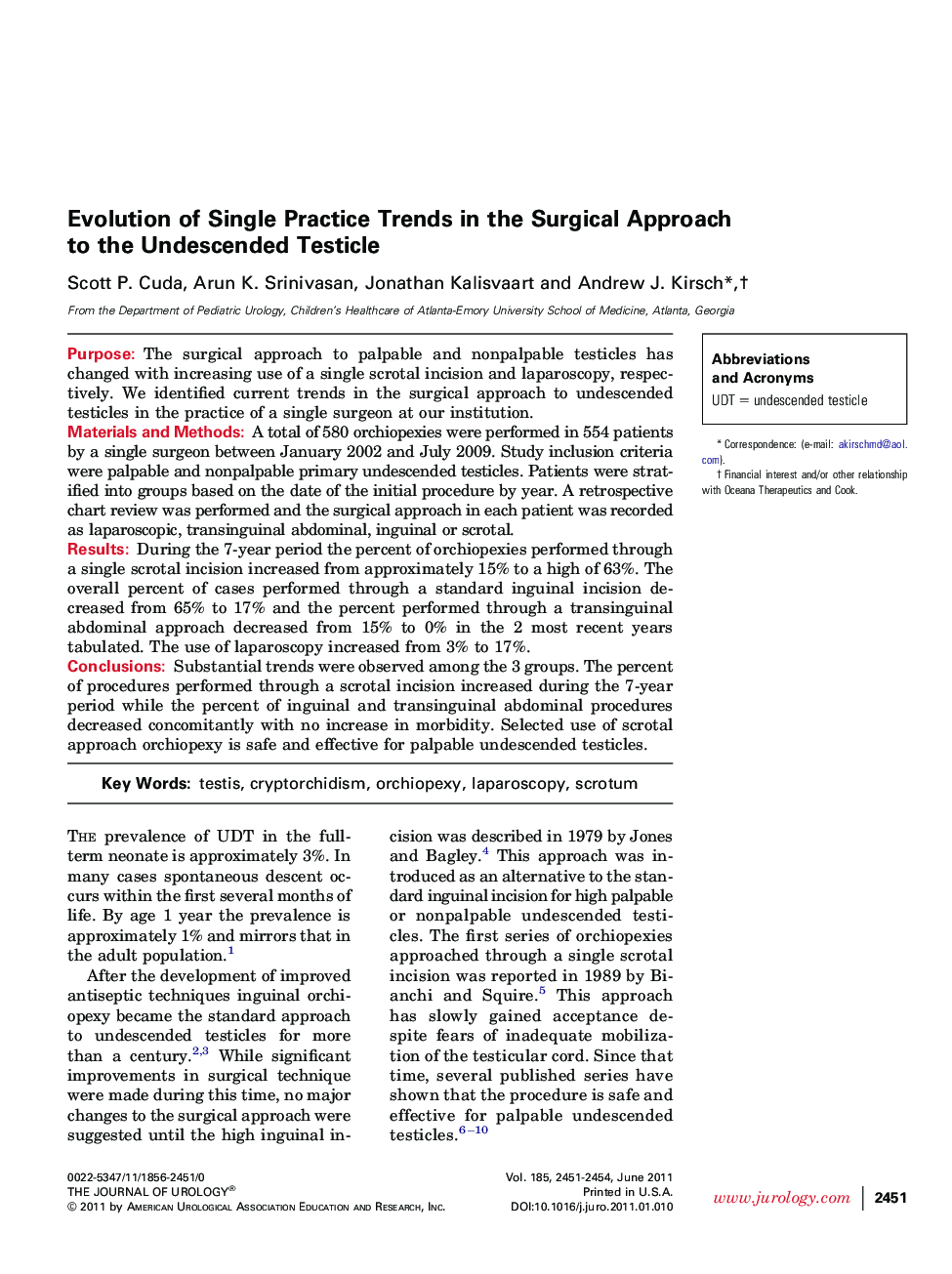| Article ID | Journal | Published Year | Pages | File Type |
|---|---|---|---|---|
| 3866333 | The Journal of Urology | 2011 | 4 Pages |
PurposeThe surgical approach to palpable and nonpalpable testicles has changed with increasing use of a single scrotal incision and laparoscopy, respectively. We identified current trends in the surgical approach to undescended testicles in the practice of a single surgeon at our institution.Materials and MethodsA total of 580 orchiopexies were performed in 554 patients by a single surgeon between January 2002 and July 2009. Study inclusion criteria were palpable and nonpalpable primary undescended testicles. Patients were stratified into groups based on the date of the initial procedure by year. A retrospective chart review was performed and the surgical approach in each patient was recorded as laparoscopic, transinguinal abdominal, inguinal or scrotal.ResultsDuring the 7-year period the percent of orchiopexies performed through a single scrotal incision increased from approximately 15% to a high of 63%. The overall percent of cases performed through a standard inguinal incision decreased from 65% to 17% and the percent performed through a transinguinal abdominal approach decreased from 15% to 0% in the 2 most recent years tabulated. The use of laparoscopy increased from 3% to 17%.ConclusionsSubstantial trends were observed among the 3 groups. The percent of procedures performed through a scrotal incision increased during the 7-year period while the percent of inguinal and transinguinal abdominal procedures decreased concomitantly with no increase in morbidity. Selected use of scrotal approach orchiopexy is safe and effective for palpable undescended testicles.
